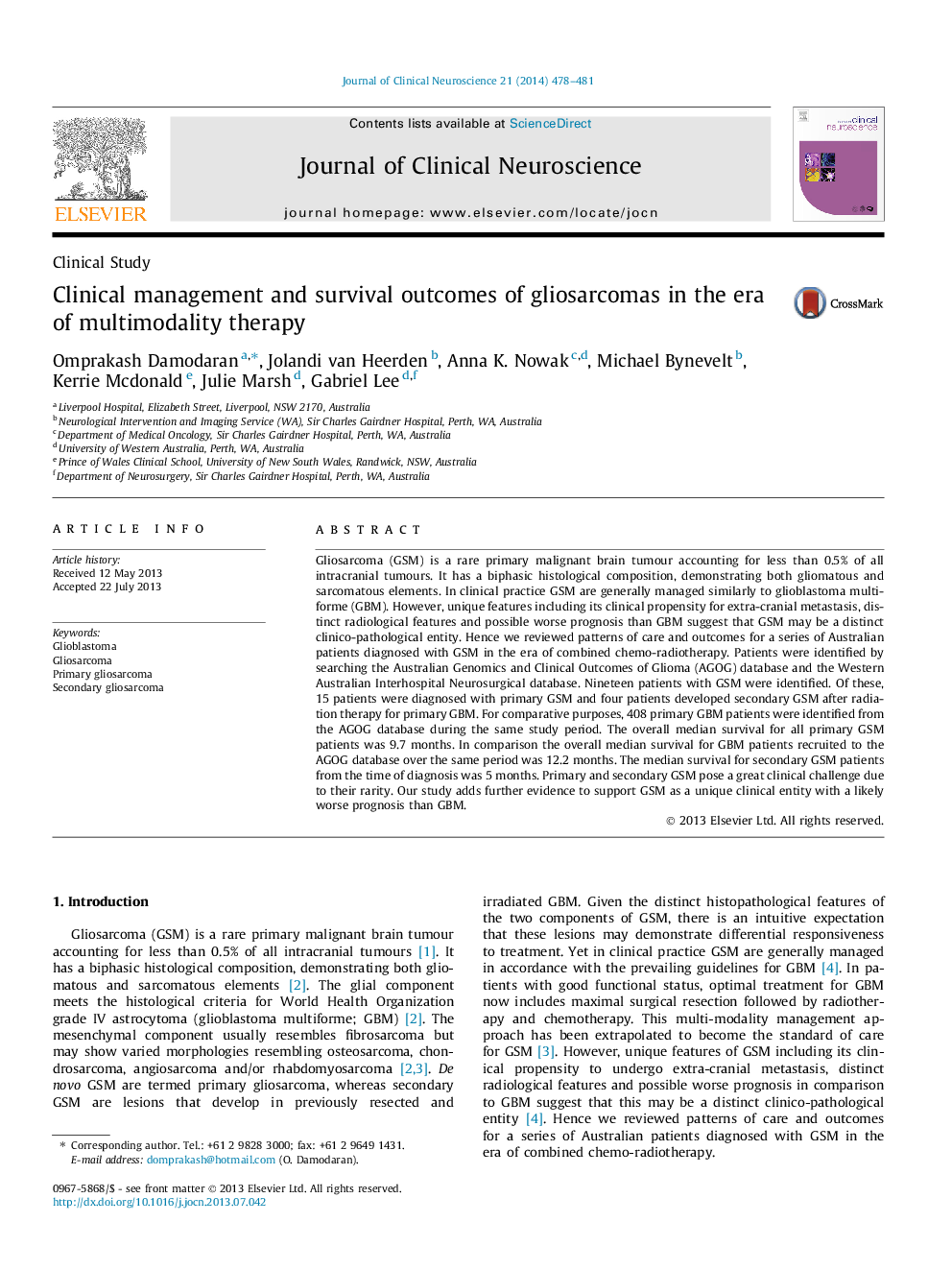| Article ID | Journal | Published Year | Pages | File Type |
|---|---|---|---|---|
| 3059445 | Journal of Clinical Neuroscience | 2014 | 4 Pages |
Gliosarcoma (GSM) is a rare primary malignant brain tumour accounting for less than 0.5% of all intracranial tumours. It has a biphasic histological composition, demonstrating both gliomatous and sarcomatous elements. In clinical practice GSM are generally managed similarly to glioblastoma multiforme (GBM). However, unique features including its clinical propensity for extra-cranial metastasis, distinct radiological features and possible worse prognosis than GBM suggest that GSM may be a distinct clinico-pathological entity. Hence we reviewed patterns of care and outcomes for a series of Australian patients diagnosed with GSM in the era of combined chemo-radiotherapy. Patients were identified by searching the Australian Genomics and Clinical Outcomes of Glioma (AGOG) database and the Western Australian Interhospital Neurosurgical database. Nineteen patients with GSM were identified. Of these, 15 patients were diagnosed with primary GSM and four patients developed secondary GSM after radiation therapy for primary GBM. For comparative purposes, 408 primary GBM patients were identified from the AGOG database during the same study period. The overall median survival for all primary GSM patients was 9.7 months. In comparison the overall median survival for GBM patients recruited to the AGOG database over the same period was 12.2 months. The median survival for secondary GSM patients from the time of diagnosis was 5 months. Primary and secondary GSM pose a great clinical challenge due to their rarity. Our study adds further evidence to support GSM as a unique clinical entity with a likely worse prognosis than GBM.
